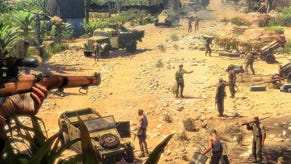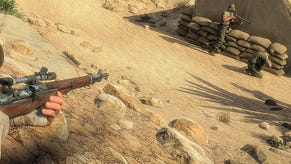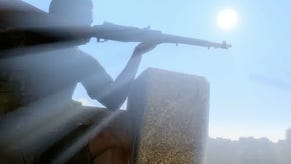Face-Off: Sniper Elite 3
Stay on target.
Update 11/7/14 13:04. We've been talking with Rebellion today and have made a couple of changes to this article. Specifically, tessellation is implemented on consoles but in a significantly pared-back manner compared to PC, only affecting near-distance objects. Certain texture assets are blurrier on Xbox One - which Rebellion says is down to lower anisotropic filtering, not lower quality assets (and the good news is that it may be patched). The studio also points out that obscurance fields are in effect on Xbox One, though we're still seeing some differences there.
Original article: Sniper Elite has debuted on next-gen and the benefits of the new wave of technology are instantly apparent. Players are given newfound freedom to explore their surroundings and take on targets in any way they see fit. The sprawling maps provide opportunities for stealth and distraction, while the developer's enhanced Asura engine provides detailed locations and long draw distances that hold up well in brightly lit, arid environments. The result is a clear step beyond the previous Sniper games, although not quite distinctive enough to be considered a true next-generation demonstration of graphical quality.
Instead, Rebellion looks to have focused on optimising the in-house technology in order to boost performance, targeting 60fps on both Sony and Microsoft's new consoles while providing enough visual flair to comfortably eclipse the majority of last-gen console titles. The decision to aim for the gold standard in frame-rate in a shooter that requires the player to make precision shots is arguably the right call, although in practice neither console version of Sniper Elite 3 manages to achieve the perceptual 60fps that defines the likes of the Call of Duty titles. This is something that more strongly affects the Xbox One version of Sniper Elite 3, which also features a few additional graphical shortcomings compared to the PS4 and PC releases.
That said, resolution is clearly one area that hasn't been compromised on either console platform, with both delivering a native 1080p presentation, combined with the use of post-process anti-aliasing that successfully avoids excessively blurring texture detail - something you can check out in the video below or the Sniper Elite 3 comparison gallery. A light coating of sub-pixel shimmer mildly taints the otherwise reasonably solid image quality, but it is only a minor drawback. Judging by the way coverage is applied across the whole scene it looks like a customised FXAA variant may be in play, and this is hinted at by the edge-smoothing options in the PC menu, which offers low, medium and high settings. The latter is used on both PS4 and Xbox One and we also opted to use this setting for our PC capture session.
On top of post-process anti-aliasing options, PC owners can also choose from 2.25x and 4x super-sampling options to get the best possible image quality. Choosing 4x SSAA when running at 1080p sees the game render internally at 4K resolution before downsampling to form a smooth, almost artefact-free full-HD image, while 2x SSAA has the engine render at 1440p before downsampling to 1080p - coverage isn't quite so flawless here, but it provides a clear boost in sub-pixel precision over post-AA alone. If you have a high-end GPU that can handle the extra workload, these options are definitely worth taking advantage of. Alternatively, if you can run in 1080p with 4x SSAA at a consistently smooth frame-rate, this opens up the possibility of gaming natively in 4K using the ultra preset (with super-sampling disabled) - a stunning experience that goes far beyond what the PS4 or Xbox One versions can muster.
Alternative comparisons:
The core graphical make up of the game also holds up from a technical perspective with the North African desert and surrounding locations allowing for the action to be set in distinctly more organic environments than Sniper Elite V2. Man-made trenches and buildings are layered across a land filled with rocky canyons, sand dunes and oases that feature trees and foliage in which to carefully sneak up on many unsuspecting foes. A combination of particle effects and mist are also used to help bring the arid desert landscape to life and this is backed up well with a variety of sound effects, ranging from crickets chirping in the undergrowth and mortar fire in the background to the sound of soldiers occasionally conversing in the distance.
This sets the backdrop for a potentially engrossing experience - along with plenty of options for cover and distraction - although the game isn't completely successful in selling you the idea of a believable living world, with the lack of some minor details breaking the illusion. For example, while running through long grass causes the stems to bend and as your character collides with them, this doesn't happen when slowly crawling through - most of the greenery is simply static and lacks anything approaching the impressive physics-based vegetation and foliage found in Assassin's Creed 4 or Crysis 3. Furthermore, it's not possible to wade or quietly swim through shallow lakes or streams, with the game putting up an artificial boundary that halts your progress.
These core graphical and gameplay-related features are fully replicated across all three platforms, although the quality of certain effects and assets does vary between each version. On PC, tessellation is used to smooth over blocky edges and give various objects a fuller look to them, but the effect is dialled back significantly on consoles, utilised at much closer range compared to the PC version at ultra settings. Streaming is also faster on the PC with visible texture transitions occurring less often. The only area where we see the PC game stumble slightly is with regards to shadow quality, which appears to be somewhat buggy - these elements appear to render in a lower resolution than the consoles.
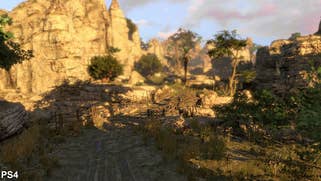
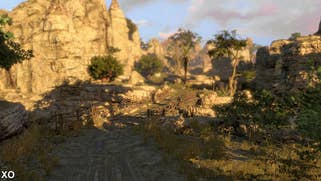

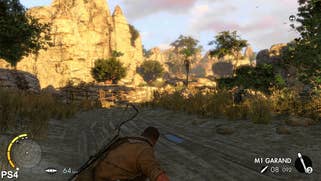


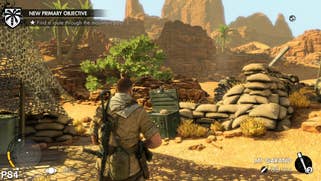
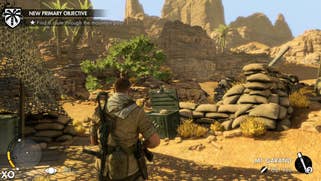

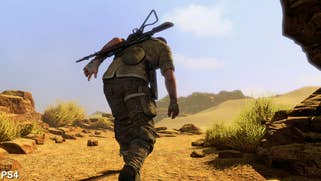
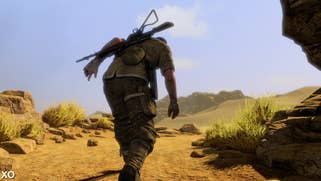
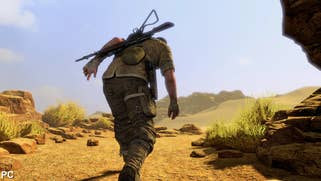


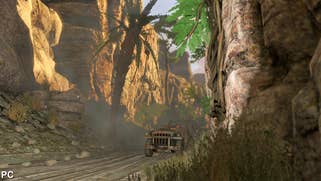

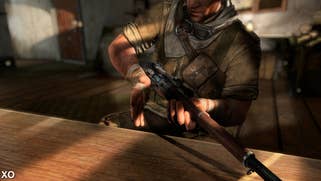
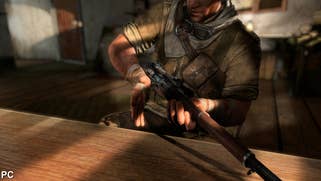
Outside of these differences, the PS4 game matches up closely to the PC release, aside from featuring a lower level of anisotropic filtering (we reckon it's 8x against 16x on the PC) that mildly impacts distant texture sharpness. On the other hand, things appear a little more ropey on Xbox One, with Rebellion making a number of graphical sacrifices, perhaps in order to achieve native 1080p while targeting 60fps. These mainly come down to a reduction in texture filtering. Indirect shadowing is also limited to screen-space ambient occlusion, while the PS4 and PC appear to utilise a more advanced implementation known as obscurance fields. This effect takes into account the radius between objects across the entire scene to produce a steady fall off with the indirect shadowing between light and dark areas, whereas SSAO creates a simpler black halo around objects that doesn't take into account such properties. [Update: Rebellion says they're present on Xbox One and that's confirmed, but we're still seeing what looks like its omission in certain places as seen in the comparison zoomer above.]
Ultimately, the biggest knock-on effect to the overall quality of the Sniper Elite 3 experience comes down to how well the game manages to stick closely to the desired 60fps update required to produce responsive and precise controls. PC owners need not worry here so long as you have a decent mid-range graphics card or better. A GTX 680 is enough to deliver 50-60fps frame-rates across a general run of play using the ultra preset (the highest available), while drops down to around 40fps are limited to more intense scenes featuring long distances combined with plenty of explosions and particle effects. Use of super-sampling is of course out of the question in 1080p, where a much higher level of GPU power is required to get the job done.
In terms of console performance, achieving a similar level of stability is out of the question - both versions feature fluctuating frame-rates that impact upon the overall experience. However, it is the PS4 that comes closest to delivering a 60fps experience, although frame-rate varies wildly from scene to scene. The opening act provides us with a close comparison across both consoles in a situation that sees the engine being heavily stressed as particle effects, explosions, and scripted environmental destruction litter these early scenes.
Here we see similar frame-rates across both consoles, with the PS4 version edging out an occasional 5-10fps lead while remaining solidly v-synced. In comparison, the Xbox One game tears constantly and this generates additional judder and a distinct screen wobble that proves distracting when shooting targets from far away. As we move further into the stage, the differences become more pronounced despite the action shifting into slightly quieter territory, with the PS4 hitting a near-solid 60fps while the Xbox One game trails behind in the mid-40s. [Update: Thanks for the comments, yes, the Xbox One launch day patch adds a v-sync option. It's actually an adaptive v-sync that appears to lock gameplay to 30fps, with occasional tearing when the engine dips below that target, as you can see from the videos below.]
Quieter moments elsewhere also demonstrate a clear gap between the two platforms. Around the halfway point during the second mission we find ourselves carefully sneaking through the undergrowth next to a small lake. Plants, bushes and a light coating of mist populate the area with alpha-based effects, while draw distances are kept suitably long to allow spotting potential targets and vantage points from far away. In these scenes we see the Xbox One demonstrate frame-rates frequently hovering around the 30fps mark complete with tearing, while the PS4 game manages to maintain a solid lead. At other times both consoles stabilise at around 50fps, delivering a smooth experience, although the PS4 does so without any impact to image consistency.
The performance analysis suggests that Rebellion wanted to target 60fps on both platforms but simply wasn't able to closely achieve anywhere near that on the Xbox One without compromising image quality. In which case a choice was made to disable v-sync in order to get the fastest controller response possible and to allow for the higher frame-rate, albeit at the expense of some horrible screen tearing. Consistency metrics are revealing here because we actually see more latency during frame drops on the PS4 due to the strict adherence to v-sync - frames are either rendered at 16.67ms or 33.3ms when frames are dropped - but the poor frame-rate and judder caused by the tearing means that Xbox One never 'feels' more responsive in practice, even though frame-time hovers a lot more closely around the desired 16.67ms mark.
There's also the issue that the analogue sticks on the Xbox One controller simply don't feel as quick to respond as those on the PS4's DualShock 4. It seems like the overall range is spread across more travel - how far the sticks physically move - resulting in a heavier feel that lacks the twitch sensation available on the PS4. That said, even with these compromises it's clear that Rebellion made the right choice where gameplay is concerned: enabling v-sync would almost certainly have things locked closer to 30fps than would be ideal - affecting controller response in the process - and this would have resulted in a heavier feel to the game that would have set it even further apart from the PS4 and PC versions.
Alternative analysis:
Sniper Elite 3 - the Digital Foundry verdict
While Sniper Elite 3 doesn't mark a true next-generation push for the series, it shows a clear evolution of the groundwork laid down in the last game that really benefits from the more wide-scale implementation of large environments and open-world design. Coupled with decent draw distances and reasonably detailed visuals, we get a real sense that Rebellion is moving ever closer to nailing the feel of being a sharpshooter stuck behind enemy lines, albeit in a B-movie type actioner that doesn't always take itself too seriously when it comes to glorifying each and every hard-hitting shot.
As you would expect, the PC version offers up the most graphically complete package of all three releases, but also runs very well on lower-end hardware configurations compared to other recent multi-platform titles. 1080p at 60fps should be easily possible via lowering a few of the less essential settings down a notch - such as shadow quality and disabling obscurance fields. Meanwhile, owners of higher-end graphics cards should be able to take advantage of smooth frame-rates at 1440p and 4K without ruthlessly needing to pair back on the quality of effects.
Rebellion's in-house Asura engine proves that it has the potential to bring a 60fps experience to consoles, although the technology doesn't appear to be fully optimised for the task in hand given the large gap between PC, PS4 and Xbox One performance. The PS4 game holds up rather well in approaching a 60fps set-up while featuring almost identical graphical quality to the PC game running with ultra settings enabled. The frame-rate drops are still distracting, but aren't really severe enough to heavily impact upon the gameplay. It's clearly the most dependable console version and easily the one to go for given the choice.
In comparison, the Xbox One version feels like it could have used a little more time in development to better optimise around Microsoft's more complicated hardware set-up. The graphical compromises rob scenes of some fine detail, while performance fails to deliver anywhere near a perceptual 60fps. An obvious solution for achieving closer parity may have been to drop resolution, but in a game so reliant on picking out small detail from a distance, that probably isn't the best idea. There's the sense that Rebellion simply made the best compromises available. By and large, it works. There's still much to enjoy here - it's just that the experience isn't as solid as it is on competing platforms.





